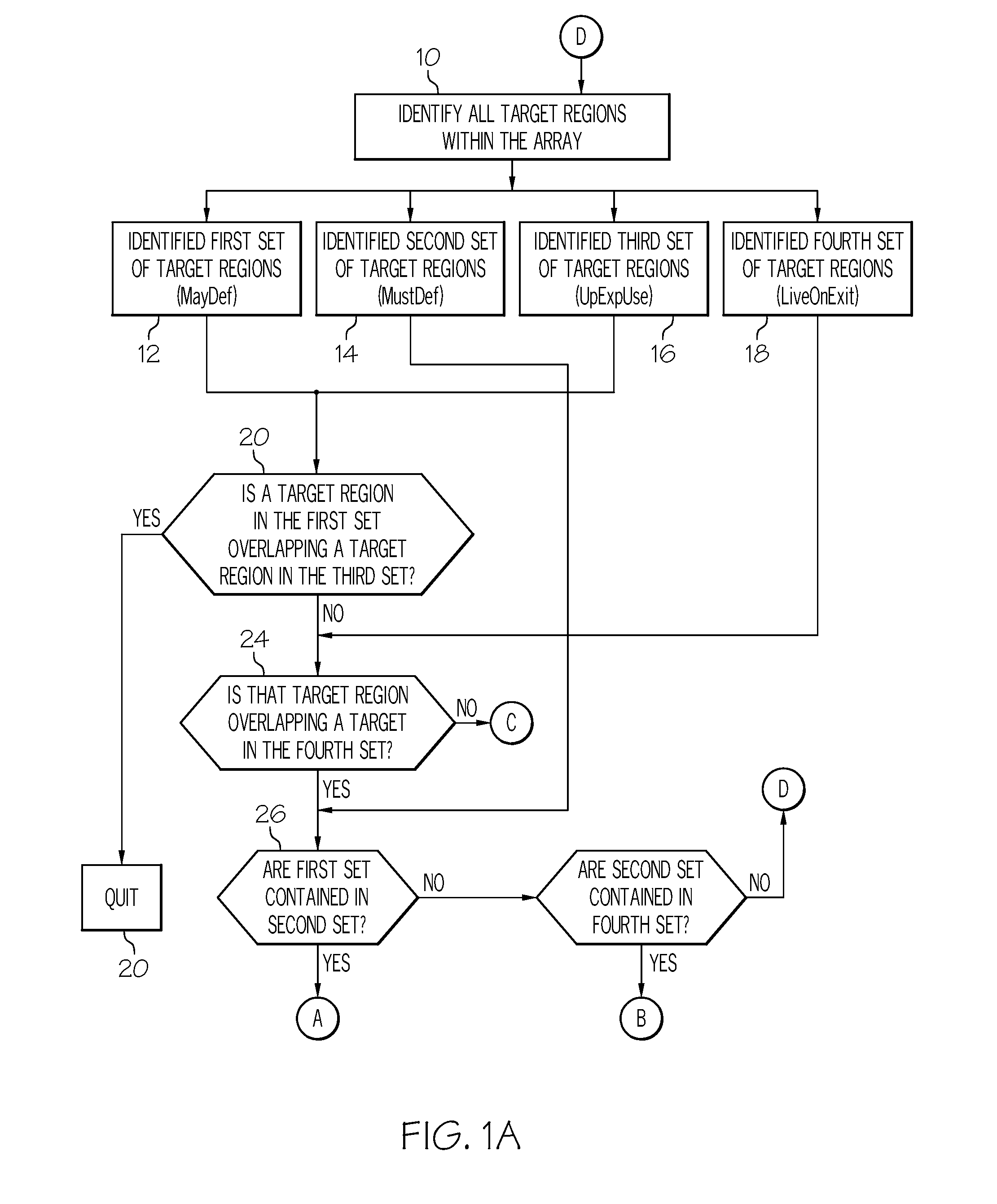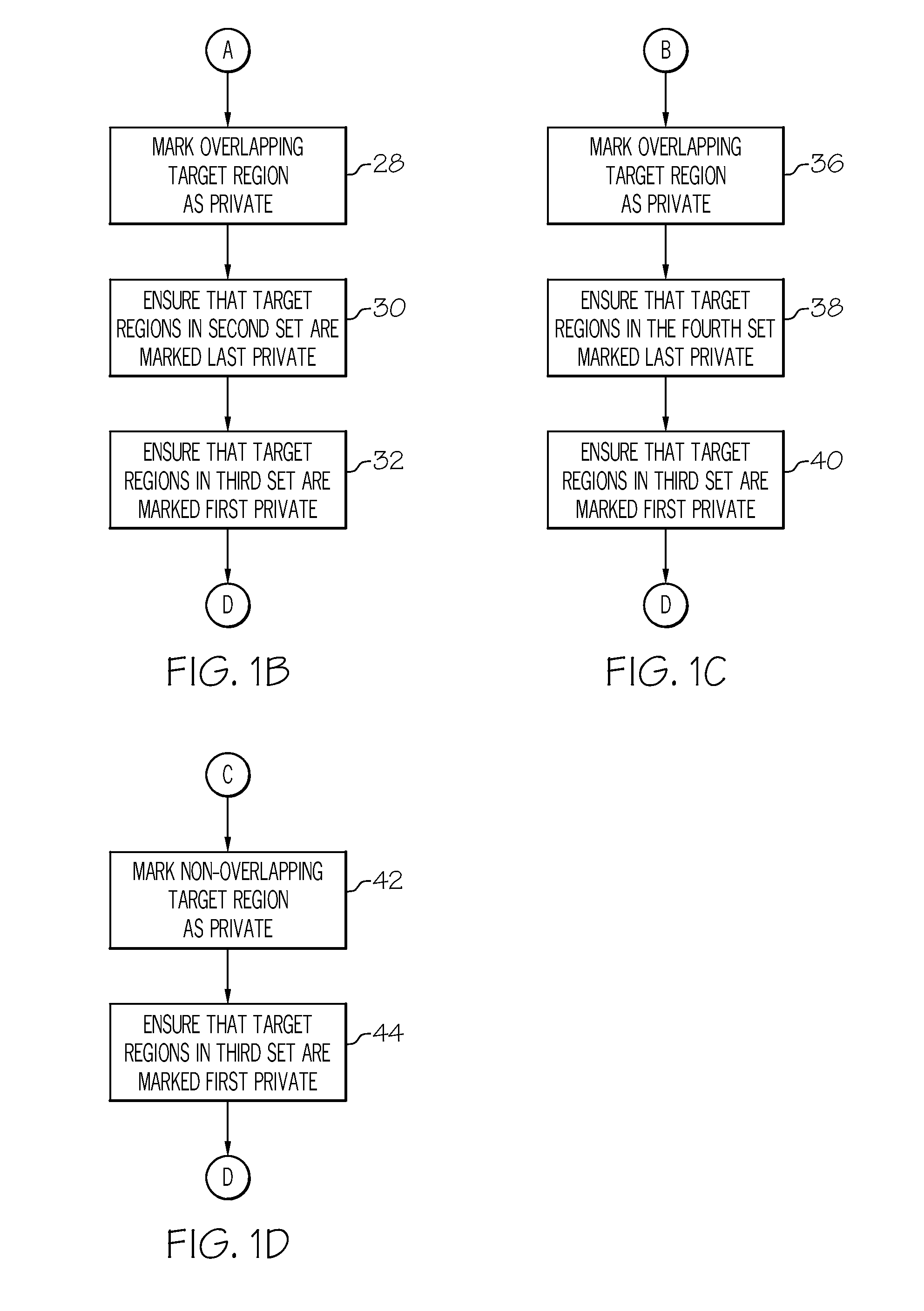Method of partially copying first and last private arrays for parallelized loops based on array data flow
- Summary
- Abstract
- Description
- Claims
- Application Information
AI Technical Summary
Benefits of technology
Problems solved by technology
Method used
Image
Examples
Embodiment Construction
[0018]Data structure of the present exemplary embodiment is similar to that described in the publication entitled “Automatic Parallelization of Recursive Procedures”, Manish Gupta and Sayak Mukhopadhyay and Navin Sinha, 1999, Proceedings of International Conference on Parallel Architectures and Compilation Techniques, which has been incorporated herein by reference in its entirety. The framework this structure utilizes automatically parallelizing recursive procedures that typically appear in divide-and-conquer algorithms. This allows exploitation of a scalable form of nested parallelism, where each parallel task can further spawn off parallel work in subsequent recursive calls.
[0019]Arrays are accessed inside a loop and may be statically or dynamically allocated. A compiler (not shown) calculates the following information about an array access inside each loop.
MayDef set: array elements that may be written.
MustDef set: array elements that are definitely written.
UpExpUse set: array e...
PUM
 Login to View More
Login to View More Abstract
Description
Claims
Application Information
 Login to View More
Login to View More - R&D
- Intellectual Property
- Life Sciences
- Materials
- Tech Scout
- Unparalleled Data Quality
- Higher Quality Content
- 60% Fewer Hallucinations
Browse by: Latest US Patents, China's latest patents, Technical Efficacy Thesaurus, Application Domain, Technology Topic, Popular Technical Reports.
© 2025 PatSnap. All rights reserved.Legal|Privacy policy|Modern Slavery Act Transparency Statement|Sitemap|About US| Contact US: help@patsnap.com


